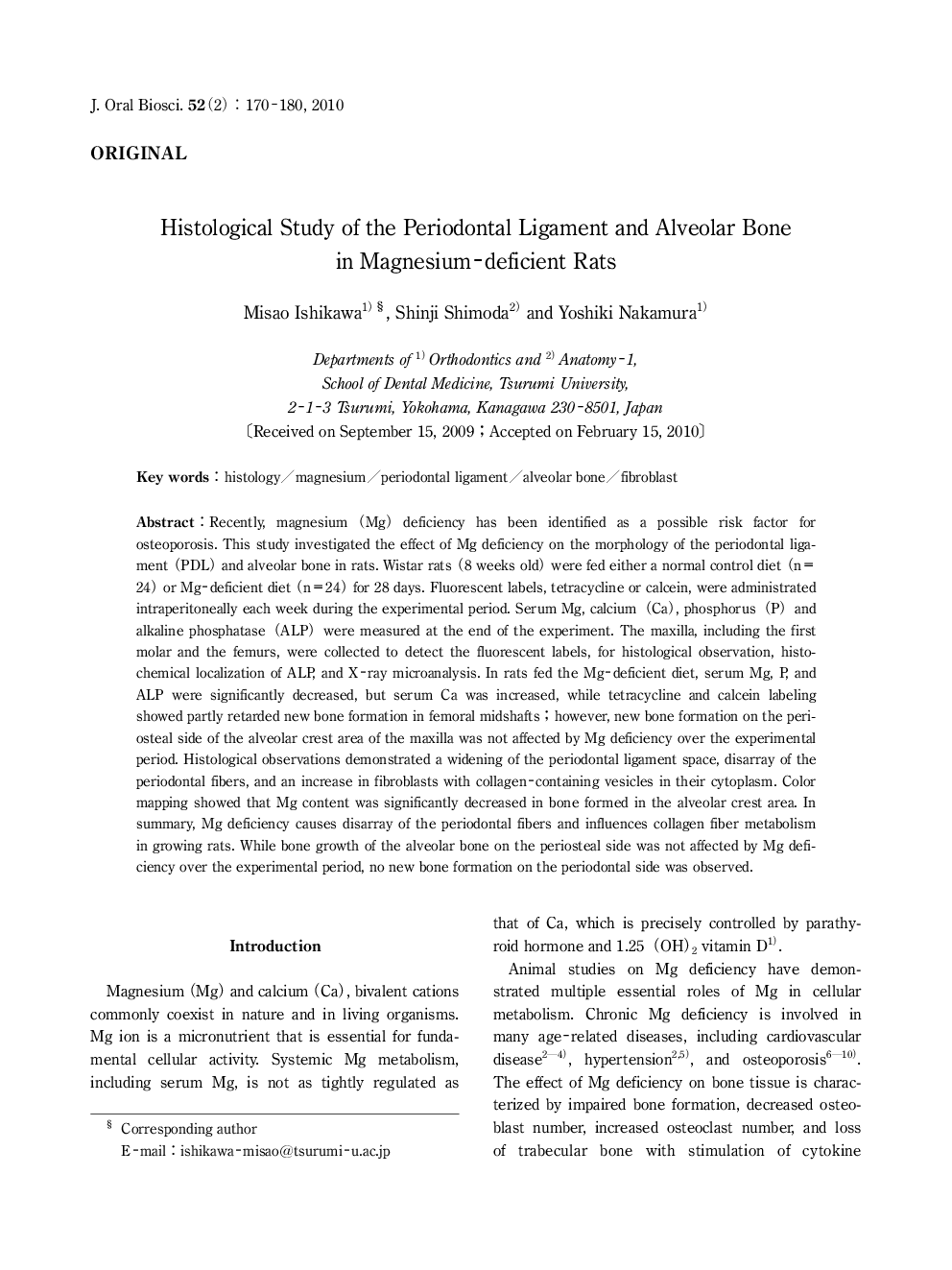| Article ID | Journal | Published Year | Pages | File Type |
|---|---|---|---|---|
| 2776983 | Journal of Oral Biosciences | 2010 | 11 Pages |
Recently, magnesium (Mg) deficiency has been identified as a possible risk factor for osteoporosis. This study investigated the effect of Mg deficiency on the morphology of the periodontal ligament (PDL) and alveolar bone in rats. Wistar rats (8 weeks old) were fed either a normal control diet (n=24) or Mg-deficient diet (n=24) for 28 days. Fluorescent labels, tetracycline or calcein, were administrated intraperitoneally each week during the experimental period. Serum Mg, calcium (Ca), phosphorus (P) and alkaline phosphatase (ALP) were measured at the end of the experiment. The maxilla, including the first molar and the femurs, were collected to detect the fluorescent labels, for histological observation, histochemical localization of ALP, and X-ray microanalysis. In rats fed the Mg-deficient diet, serum Mg, P, and ALP were significantly decreased, but serum Ca was increased, while tetracycline and calcein labeling showed partly retarded new bone formation in femoral midshafts; however, new bone formation on the periosteal side of the alveolar crest area of the maxilla was not affected by Mg deficiency over the experimental period. Histological observations demonstrated a widening of the periodontal ligament space, disarray of the periodontal fibers, and an increase in fibroblasts with collagen-containing vesicles in their cytoplasm. Color mapping showed that Mg content was significantly decreased in bone formed in the alveolar crest area. In summary, Mg deficiency causes disarray of the periodontal fibers and influences collagen fiber metabolism in growing rats. While bone growth of the alveolar bone on the periosteal side was not affected by Mg deficiency over the experimental period, no new bone formation on the periodontal side was observed.
